Navigating the Depths of a Degloved Face: Understanding, Diagnosing, and Treating this Traumatic Injury
What do you know about a degloved Face? The human body is resilient and capable of enduring various challenges, but there are instances where the toll of trauma leaves a lasting mark. A degloved face, a term evoking vivid imagery, signifies a profound injury with consequences that extend beyond the surface. In this exploration, we delve into the intricacies of degloving injuries, particularly those affecting the face, unraveling the causes, types, diagnostic challenges, and the nuanced landscape of treatments. Brace yourself for a journey into the medical realm where resilience meets reconstruction.
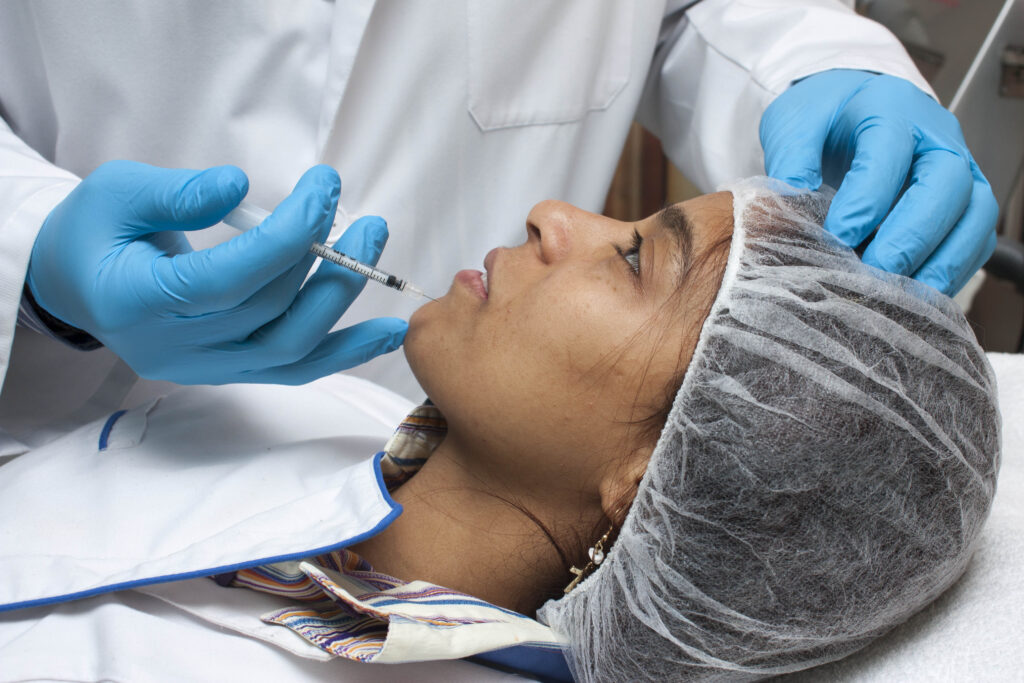
Understanding the Anatomy of Degloving Injuries
A degloving injury, also known as an avulsion, is a traumatic occurrence where the upper layers of skin and the tissue beneath are forcefully torn away from underlying structures like muscle, connective tissue, or bone. This separation severs the blood supply to the affected area, making degloving injuries not only visually dramatic but potentially life-threatening. While these injuries commonly impact the extremities, a degloved face is a distinct and intricate manifestation.
Causes of Degloving Injuries:
The genesis of a degloving injury is often rooted in high-impact trauma, with specific causes that include:
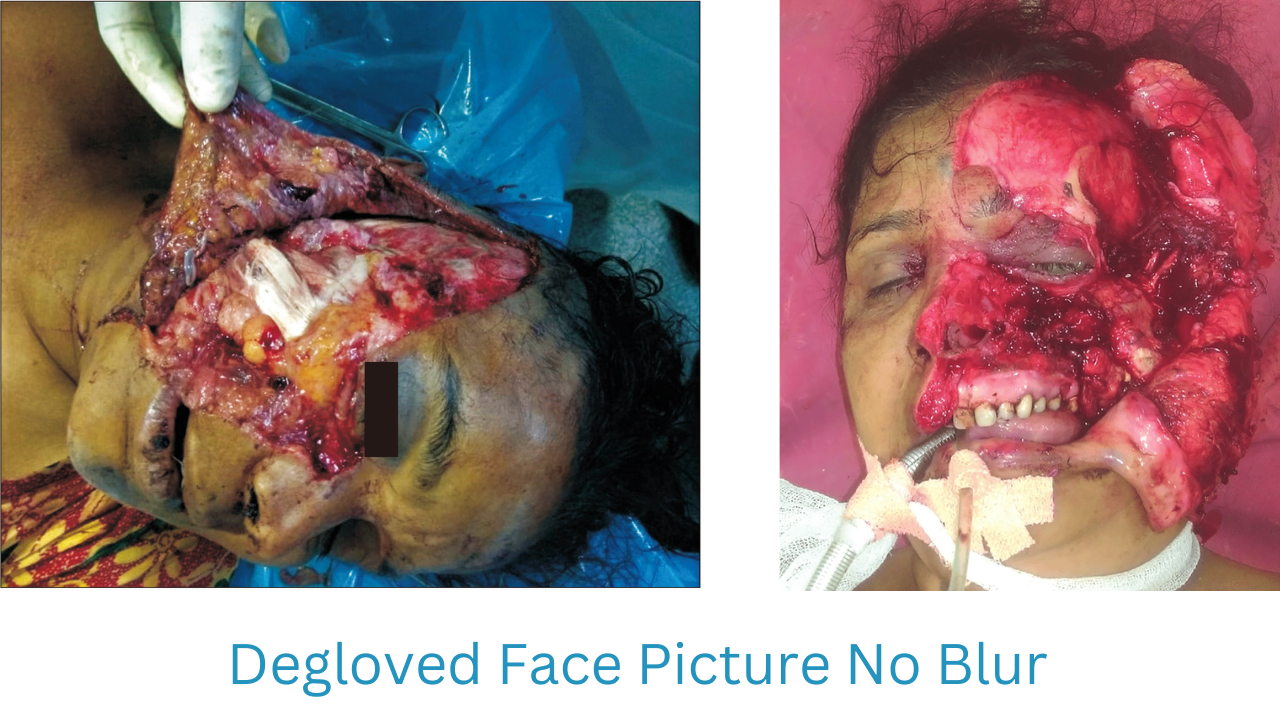
Motorcycle Accidents:
- The speed and force involved in motorcycle accidents can lead to severe degloving injuries.
Car Accidents:
- Collisions on the road, especially at high speeds, pose a significant risk of degloving injuries.
Sports Mishaps:
- High-impact sports, characterized by sudden and forceful movements, can result in degloving injuries, although this is less common.
Animal Bites:
- Encounters with powerful animals can lead to traumatic injuries, including degloving.
Falls from Heights:
- Accidents involving falls from significant heights, such as construction sites, may result in degloving injuries.
Construction Accidents:
- Injuries related to heavy machinery and industrial equipment are common culprits.
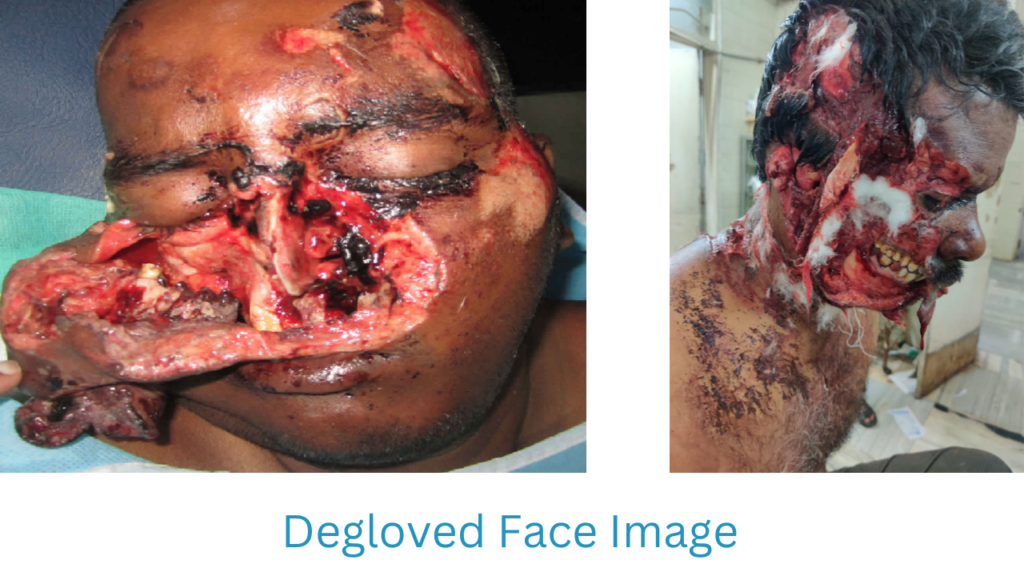
Types of Degloving Injuries:
Degloving injuries are broadly categorized into two types, each with its distinct characteristics:
Open Degloving Injury:
- The skin and tissue are forcefully ripped away, exposing muscles and bones underneath.
- Common areas affected include the legs, torso, scalp, and face.
- Typically caused by traffic accidents, industrial mishaps, falls from heights, sports injuries, or animal bites.
Closed Degloving Injury:
- The top layer of skin remains intact but is separated from the tissue underneath.
- Morel-Lavallee lesions, fluid-filled spaces, may form beneath the skin.
- Often seen in areas like the top of the hip bone, torso, buttocks, lower spine, shoulder blades, and knees.
Diagnosing the Complexity:
Diagnosing degloving injuries is a multifaceted challenge for healthcare professionals. Visual assessment alone may not reveal the full extent of the injury, and skin viability analysis is intricate. Key points in the diagnostic process include:
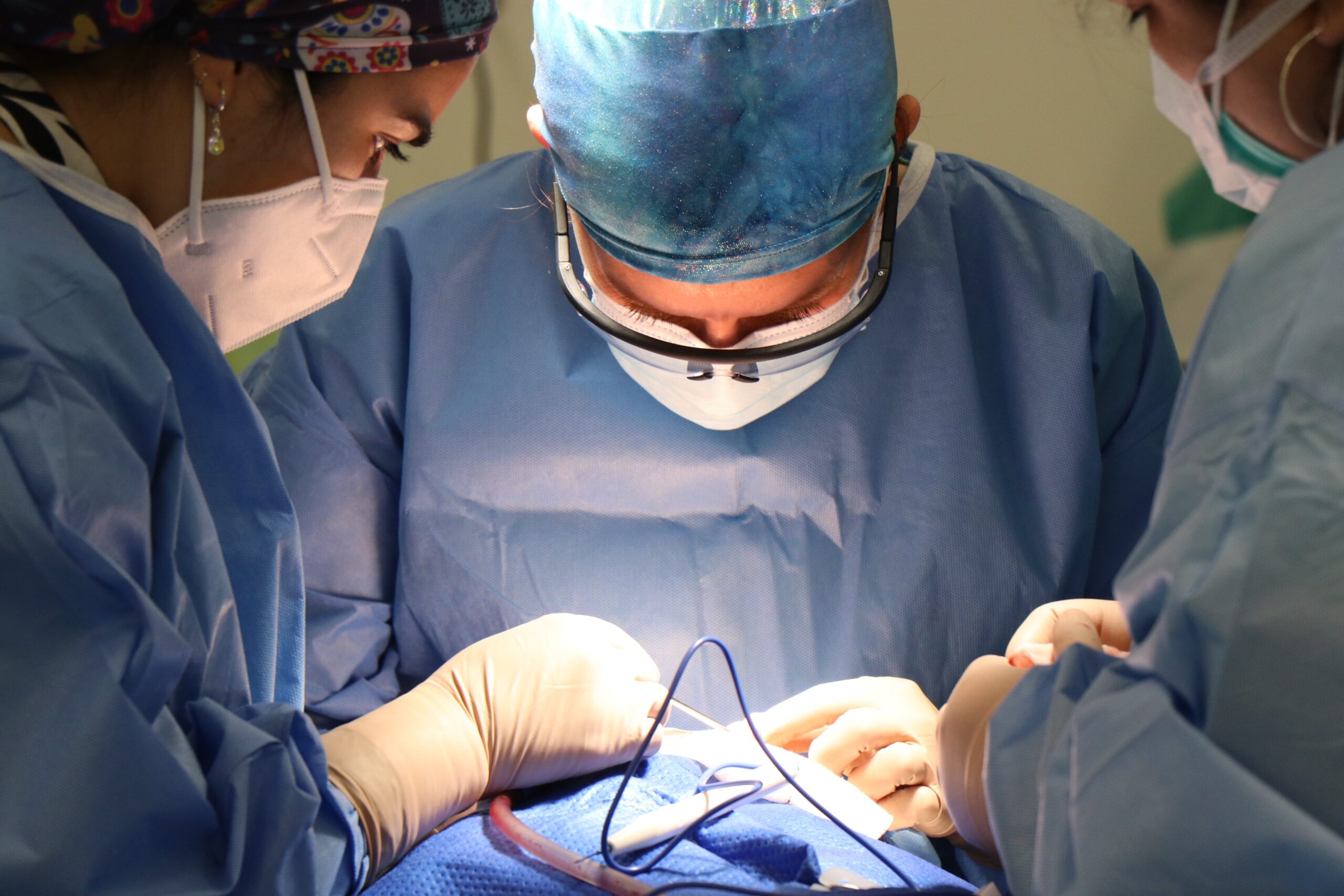
Medical Examination:
- Doctors rely on a thorough examination and the patient’s injury history.
Investigations:
- Additional tests may be ordered to determine the extent of damage, considering that visual assessment may not suffice.
Skin Viability Analysis:
- Determining skin viability involves assessing factors like bleeding, skin color, temperature, and pressure reactions.
Open vs. Closed Diagnosis:
- Open degloving injuries, exposing muscles and bones, are relatively easier to diagnose than closed injuries.
Treatment Approaches:
The treatment path for degloving injuries is diverse, contingent on factors such as severity, location, and the presence of fractures.
Treatment for Open Degloving Injuries:
Replantation or Revascularization:
Reattaching or restoring blood supply to the degloved skin.Reconstructive Surgeries:
Addressing complex facial injuries through surgical interventions.Reattachment and Grafts:
Fingers or toes may be reattached, and skin grafts applied.Amputations:
In extreme cases, amputations may be necessary.Post-operative Physiotherapy:
Rehabilitation to regain functionality.
Treatment for Closed Degloving Injuries:
Compression and Physical Therapy:
Utilizing compression bandages and physical therapy for less severe cases.
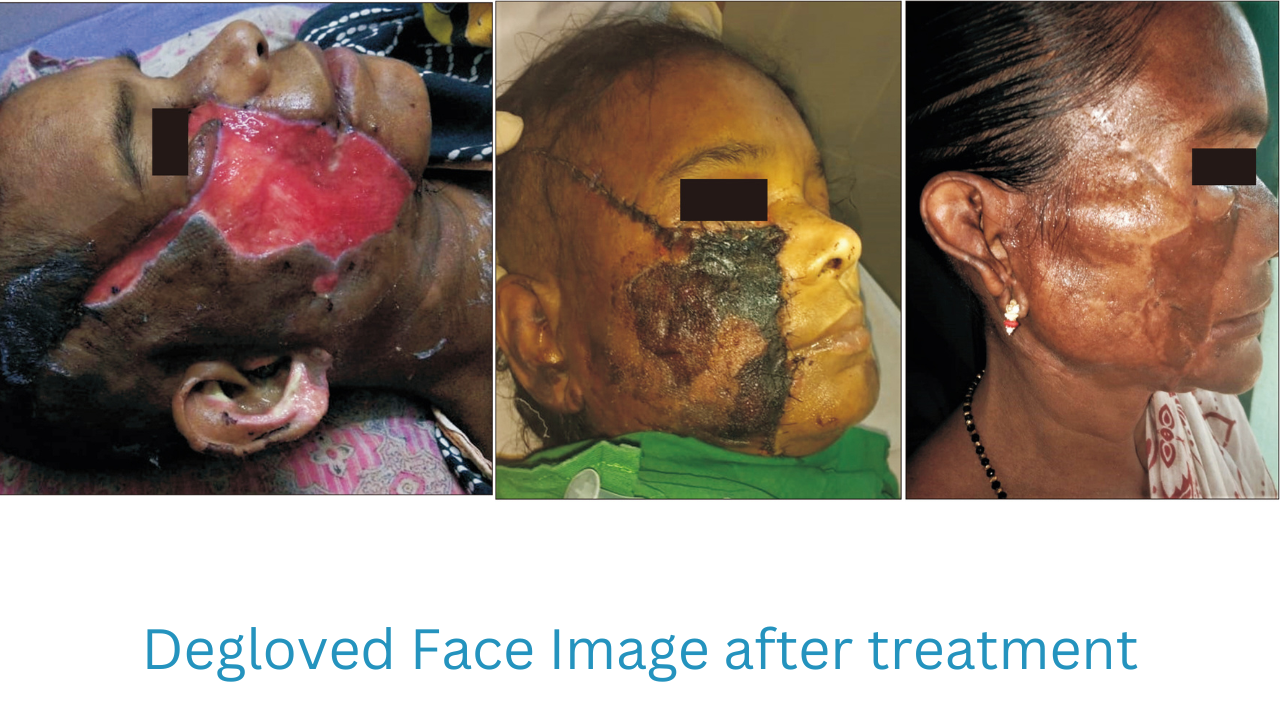
Additional Approaches for Severe Cases:
Fluid Drainage:
Draining accumulated fluids from lesions.Tissue Removal:
Removing dead tissues to facilitate healing.Sclerotherapy:
Injecting vessels with medication to shrink them.
Facial Degloving: A Complex Reconstructive Challenge:
Facial degloving injuries add an extra layer of complexity to the already challenging landscape of degloving injuries. Addressing these injuries involves a staged approach for optimal cosmetic and functional outcomes. Fundamental components include airway maintenance, radical debridement, and precise tissue alignment. Achieving positive results in facial degloving injuries requires a delicate balance of medical expertise and artistic reconstruction.
In the realm of traumatic injuries, a degloved face stands as a testament to both the fragility and resilience of the human body. The journey from diagnosis to treatment is a meticulous dance between medical science and the art of reconstruction. As the medical community continues to push boundaries, each successful treatment becomes a chapter in the evolving narrative of degloving injuries, offering hope and healing to those who bear the physical and emotional scars.
